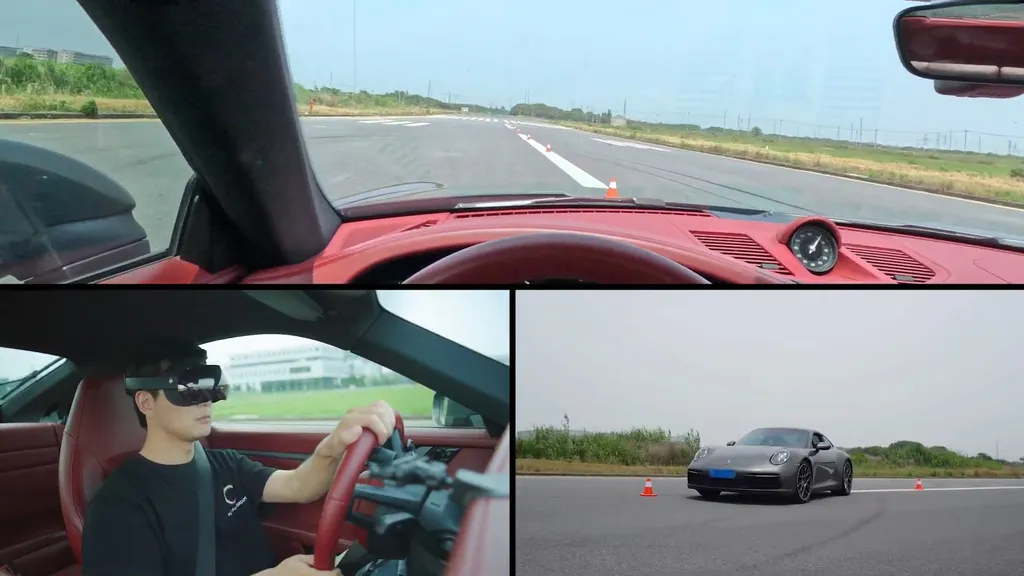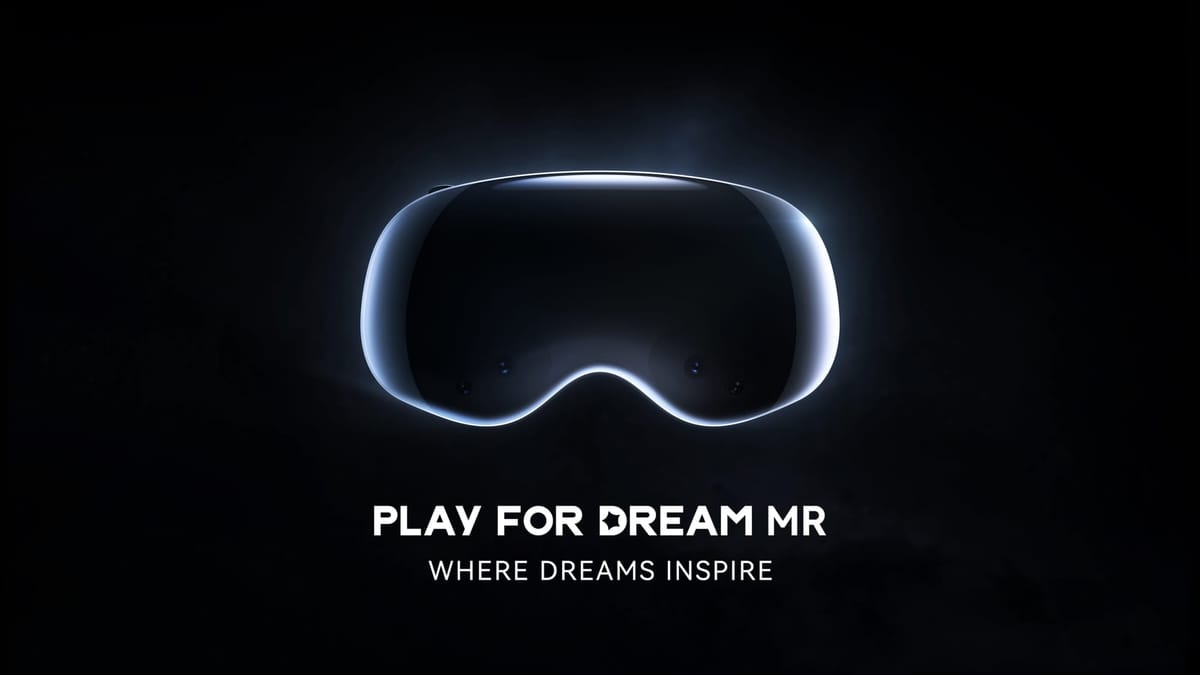Play for Dream teased its headset's low latency passthrough by having a racing driver weave between cones while wearing it.
What Is Play For Dream MR?
Play For Dream is a Chinese headset company that was formerly known as YVR.
Its latest headset, Play For Dream MR, was announced back in June as coming to China and some other Asian countries, and last month it launched a Kickstarter to bring it to the west too.
Play For Dream MR uses the Snapdragon XR2+ Gen chipset and will retail starting at $2000. Its design looks to be a crossover between Apple Vision Pro and Meta Quest Pro.
The XR2+ Gen 2 chipset, Qualcomm's most powerful XR chip yet, is paired with 16GB of LPDDR5X RAM and either 512GB or 1TB of UFS 3.1 storage, depending on the model you buy.
The headset features dual 3840×3552 micro-OLED displays from BOE, higher resolution than Vision Pro's Sony panels, with a refresh rate of 90Hz and 92% DCI-P3 color gamut, the same as Vision Pro.
Its pancake lenses offer a claimed field of view of 103°, and the headset has eye tracking for automatic IPD adjustment and foveated rendering.
In addition to eye tracking, the headset features high-resolution color passthrough, a depth sensor, hand tracking, and Touch Plus-like ringless tracked controllers.
The headset's total weight is exactly the same as Apple Vision Pro, 650 grams, but the distribution of this weight is vastly different. A curved battery is built into the back of the strap, similar to the approach Meta Quest Pro took.
The battery at the rear of the strap can power the headset for just over 1 hour, and an included tethered external battery adds 2.5 hours for a total of 3.5 hours usage.
Play For Dream claims the first global units will start shipping in December, and that all headsets should be shipped within the first weeks of 2025.
With HoloLens 2 being discontinued with no replacement, Magic Leap pivoting to providing technology instead of building headsets, Snap Spectacles still only a developer kit, and Meta still years away from an actual AR glasses product, the foreseeable future of AR is camera passthrough. There remains reasonable skepticism about the suitability of passthrough for dangerous scenarios though, such as factory floors.
One of the concerns about passthrough is latency. With see-through AR you get zero latency view of the real world, whereas in passthrough systems it takes time to process the camera frames. It's generally accepted that the absolute maximum motion-to-photon latency for VR systems to feel like they have no latency is around 20 milliseconds, while for transparent AR this figure can be as low as 5 milliseconds.
Most people who have experienced passthrough have so far only done so on a Meta headset. Quest 3 has a passthrough latency above 30 milliseconds, a tradeoff it makes to achieve depth correctness, which is perceptible.
But Play for Dream claims its passthrough system has just 14 milliseconds of latency on average. And in a striking demonstration of this, they had a racing driver wear the headset while weaving between cones on a track.
It's not clear from the video what speed this is happening at, but it's an impressive showcase of the potential of passthrough nonetheless. We should, however, note that you should absolutely not do this on public roads, ever. This is a tech demo, not a proposed use case.
When announcing the XR2 Gen 2 chipset, Qualcomm also showed its own passthrough latency demo of two people playing pingpong while wearing a reference design headset, claiming the chip is theoretically capable of as low as 12 milliseconds.
For comparison, Apple says the shipping Vision Pro has 12 milliseconds of passthrough latency. It claims this provides "a virtually lag-free, real-time view of the world", which I found to be true in my review. And advancements in cameras, chips, and software are set to deliver significant improvements to passthrough across all price segments in coming years.




























